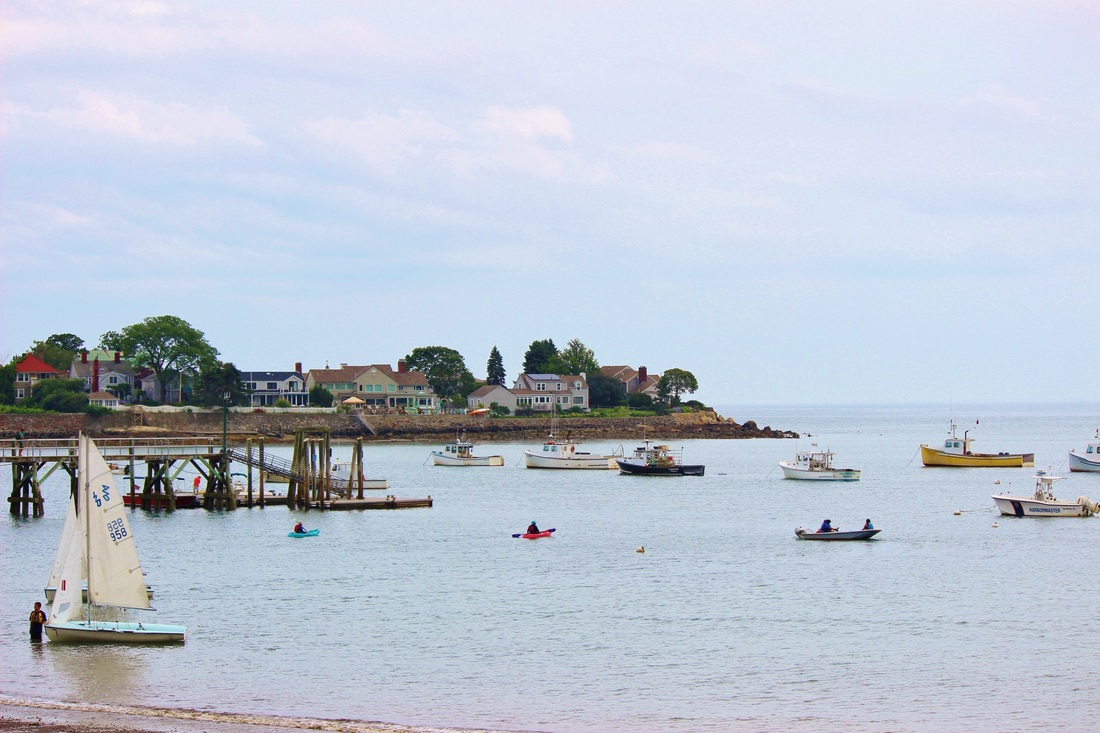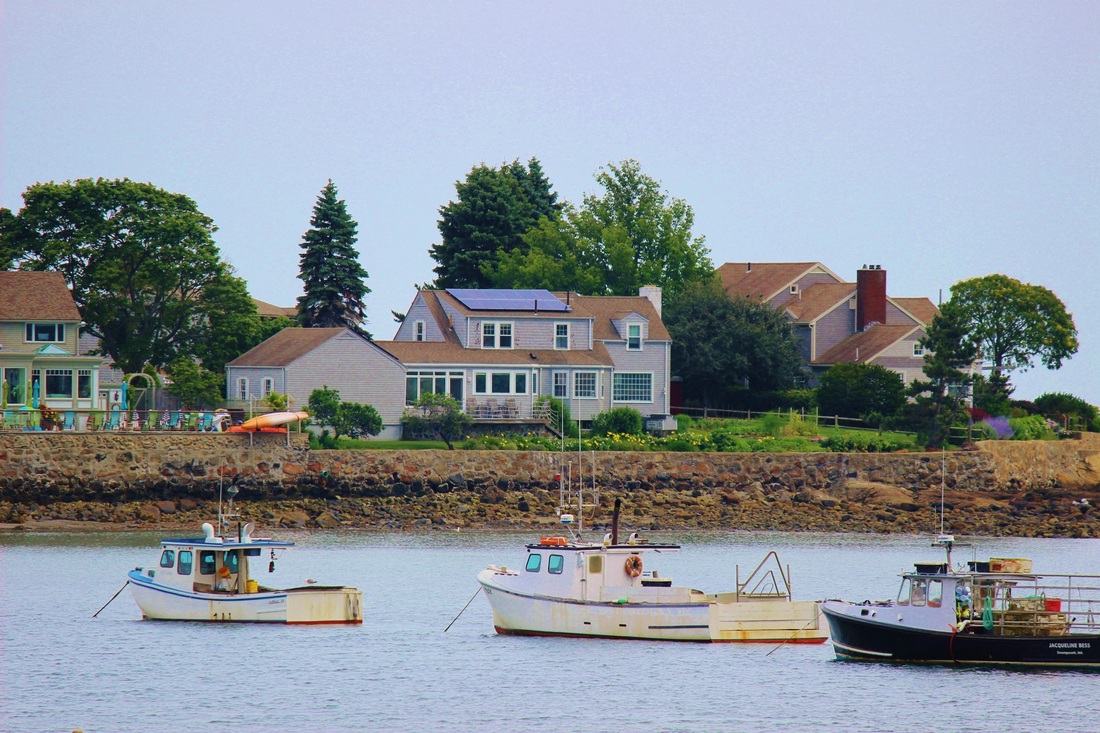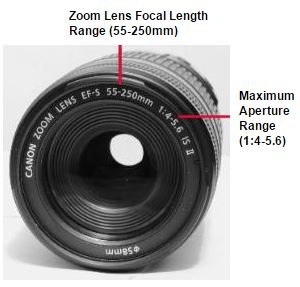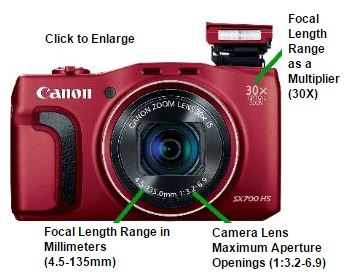Zoom Lenses and Zoom Lens Features
Zoom lenses are the most versatile type of camera lenses and are used on all types of cameras. They allow you to take pictures at different focal lengths which will give different views of the same scene.
Using a zoom lens allows you to get a closer shot of your subject if you cannot, or choose not to get close to the subject. That makes zoom lenses the best choice for sports, concerts, wildlife, and numerous other photography subjects.
The focal length that is used on a zoom lens can also affect the appearance of Depth of Field in an image. Depth of field is a reference to how much of the area in an image will appear to be in focus or out of focus.
Using a zoom lens may also help you with your photo composition skills. That is because you will be able to easily zoom in or out, to include the best parts of the scene while eliminating things that may be distracting or unwanted in the picture. The zoom lens will also reduce the amount of moving around required to get the shot you want.
Using a zoom lens allows you to get a closer shot of your subject if you cannot, or choose not to get close to the subject. That makes zoom lenses the best choice for sports, concerts, wildlife, and numerous other photography subjects.
The focal length that is used on a zoom lens can also affect the appearance of Depth of Field in an image. Depth of field is a reference to how much of the area in an image will appear to be in focus or out of focus.
Using a zoom lens may also help you with your photo composition skills. That is because you will be able to easily zoom in or out, to include the best parts of the scene while eliminating things that may be distracting or unwanted in the picture. The zoom lens will also reduce the amount of moving around required to get the shot you want.
The pictures above were taken with a Digital Slr camera equipped with an APS-C size image sensor. Compact cameras will produce a wider view when their lenses are set at the same focal lengths as shown above. Check the 35mm equivalent tutorial for more on this subject.
Picture #1 is a scene consisting of the water, small boats, and some barely visible homes on the land in the distance. On the other hand, picture #2 would be called a picture of a house by the water with a few boats in the foreground.
Both pictures were taken from the exact same spot and were taken at different focal lengths. Yet they are two entirely different scenes.You probably wouldn't notice at first glance, but the house shown in the center of picture #2 is also in the center of picture #1. (click image to enlarge) The difference in the views shown in these 2 pictures is an example of the versatility of a zoom lens.
Zoom Lens Focal Lengths:The zoom lens focal length that is used will determine how near or far away the subject or scene will appear in a picture. A picture taken with a short lens focal length such as 28mm or 55mm will give a wide view of a scene.
The same scene taken with a longer lens focal length such as 200mm will produce a closer, more magnified,and narrower view. That is, as long as the camera lens to subject distance remains the same.
Note: Digital Slr cameras like the Canon T7i and Compact System cameras like Sony Alpha a6100 have lenses that can removed and replaced with a different compatible lens. The lenses for Basic Compact cameras and Bridge cameras are permanently attached and cannot be removed.
Zoom lenses are available from wide angle to telephoto focal lengths. Focal lengths for all zoom lenses are listed as a range.
Listed below are some of the typical zoom lens focal length ranges for cameras whose lenses can be changed. As you can see, some lenses cover a limited focal range whereas others can go from a very wide angle focal length to a telephoto focal length. (focal lengths around 70mm or more are considered to be telephoto focal length)
Both pictures were taken from the exact same spot and were taken at different focal lengths. Yet they are two entirely different scenes.You probably wouldn't notice at first glance, but the house shown in the center of picture #2 is also in the center of picture #1. (click image to enlarge) The difference in the views shown in these 2 pictures is an example of the versatility of a zoom lens.
Zoom Lens Focal Lengths:The zoom lens focal length that is used will determine how near or far away the subject or scene will appear in a picture. A picture taken with a short lens focal length such as 28mm or 55mm will give a wide view of a scene.
The same scene taken with a longer lens focal length such as 200mm will produce a closer, more magnified,and narrower view. That is, as long as the camera lens to subject distance remains the same.
Note: Digital Slr cameras like the Canon T7i and Compact System cameras like Sony Alpha a6100 have lenses that can removed and replaced with a different compatible lens. The lenses for Basic Compact cameras and Bridge cameras are permanently attached and cannot be removed.
Zoom lenses are available from wide angle to telephoto focal lengths. Focal lengths for all zoom lenses are listed as a range.
Listed below are some of the typical zoom lens focal length ranges for cameras whose lenses can be changed. As you can see, some lenses cover a limited focal range whereas others can go from a very wide angle focal length to a telephoto focal length. (focal lengths around 70mm or more are considered to be telephoto focal length)
The focal length range is usually printed somewhere on the barrel or front rim of the of the camera lens. For instance you might see a notation on the lens such as 55-250mm. What that means is that pictures can be taken with that lens using focal lengths from 55mm up to 250mm.
In the same area where the focal length range is listed,you will also see numbers like 1:4-5.6. Those numbers refer to maximum lens aperture settings and will be explained in the variable aperture zoom lens section listed below.
The zoom range for most Compact Digital cameras and some Bridge cameras may be listed and advertised as 3X, 10X, 18X or maybe 40X. For instance, the manufacturers of the Canon Powershot SX720HS advertise this camera as having a 40X zoom lens.
However, the lens does have a focal length range in millimeters just like Digital Slr and Compact System cameras.The actual focal length range of a compact camera lens can also be found by looking on the front of the camera lens.
Variable Aperture Zoom Lenses: Every camera lens has an aperture. It is an opening inside the lens that allows more, or less light to reach the camera's image sensor. The various sizes or settings (larger or smaller) of the aperture opening are known as F Stops.
As previously stated, in addition to the focal length range being listed on the camera lens, you will find numbers such as 1:4 -5.6 or F4.0-5.6 listed as well. Those numbers are the maximum lens aperture openings or F Stops that can be used for the shortest and longest focal length of the lens.
In the example of the camera lens shown above on the left, the notation 1:4 -5.6 lets you know that when the lens is used at its shortest focal length, (55mm or close to it) the largest aperture opening or F Stop that can be used will be F 4.0.
It also means that when you use the lens closer to, or at its maximum focal length of 250mm, the largest aperture opening or F Stop that can be used will be F 5.6.
Zoom lenses with maximum aperture openings that change depending on the focal length being used are called Variable Aperture Lenses. Compact digital camera zoom lenses are included in this category along with most detachable lenses for Digital SLR and Compact System camera lenses.
Typical examples of variable aperture zoom lenses and their focal length range are the Canon EF-S 55-250mm, F4-5.6 lens and the Tamron AF 10-24mm, F3.5-4.5 lens.
The size of the maximum lens aperture opening is important because it will have an effect on the camera's ability to take pictures in low light situations. If you need to learn more about the function of the camera lens aperture and F Stops, read the Camera Lens Aperture tutorial.
Fixed Aperture/Constant Aperture Zoom Lenses: On the other hand, there are fixed aperture zoom lenses on the market that can be used at any lens aperture setting possible with the lens no matter what focal length is being used. (fixed aperture lenses are also known as constant aperture lenses)
A couple of examples of fixed aperture zoom lenses are the Tokina 17-35mm F4 Pro FX lens or the Tamron 70-200mmF2.8 lens. Constant or fixed aperture zoom lenses will usually cost more than your average zoom lens. You can tell that they are constant aperture zoom lenses because the maximum aperture is listed as one number such as F4 or F2.8 rather than as a range.
"Fast" Zoom Lenses: The maximum aperture opening on your average zoom lens usually will not be as large as the maximum aperture on a prime lens at an equal focal length. (a prime lens is a fixed focal length lens) Therefore, some zoom lenses may not be too effective in low light situations.
However, there are "fast" zoom lenses available. A "fast" zoom lens may have a maximum aperture such as F/2.8 or larger which will allow more light into the lens than a lens with a maximum aperture of F4.0 A fast lens will also you to use faster shutter speeds in low light situations.
The Nikon 80-200mm F2.8 lens is a good example of a fast zoom lens. Check the Camera Exposuire Basics tutorial to learn more about how larger aperture openings can help you to use faster shutter speeds in certain situations.
The Camera Lens Focal Length Can Affect Depth of Field: When deciding which focal length to use, keep in mind that shorter focal lengths will give the appearance of wide or deep depth of field in an image. In a picture with deep depth of field, the main subject as well as the background and foreground areas will appear to be pretty much in focus.
Using long focal lengths in many situations will contribute to the appearance of more shallow depth of field in an image. When viewing a picture with shallow depth of field, the main subject will be in focus, but areas in the background or foreground might appear to be out of focus to varying degrees.
However, the shallowness or deepness of depth of field in an image is also dependent upon the camera aperture setting and camera lens to subject distance. Please read the Depth of Field tutorial for more on this subject.
Using Long Focal Lengths: When very long focal lengths are used there is a possibility that the picture might be out of focus due to camera shake.Since there is a great amount of magnification involved when very long focal lengths are used, any slightly out of focus area in the image will appear will appear to be greatly out of focus.
If your camera lens is equipped with an image stabilization feature, make sure to turn it on, especially when using long focal lengths. A general rule that may help prevent out of focus pictures due to camera shake is that you should use a shutter speed that is equal to or greater than the focal length that is being used. (if possible)
For instance, if you are taking a picture using a focal length of 250mm, you should use a shutter speed of 1/250 second or higher to help reduce the possibility of blurring due to camera shake. If you are using a focal length of 400mm, you should use a shutter speed of 1/400 second or higher.
If using a shutter speed equal to, or greater than the focal length being used is not possible, place the camera on a tripod and use the self timer or a remote shutter release to prevent camera shake. An alternative would be to increase the ISO setting or use a larger camera aperture opening (F Stop).
Adjusting those settings will allow you to use a faster shutter speed. Again, check the tutorial Camera Exposure Basics for more on how the lens aperture, and ISO settings can help you possibly use a faster shutter speed.
Optical Zoom vs Digital Zoom: When you look at the specifications of some digital cameras you might notice the zoom range listed as one number for optical zoom and another number for digital zoom. For instance, a digital camera might have a 10X Optical Zoom range and a 5X Digital Zoom range. (this excludes Digital Slr cameras which generally will not have a digital zoom option)
The optical zoom narrows the field of view and enlarges the the remaining portion of the image using the optics contained in the camera lens. Once the lens reaches the maximum zoom focal length (in this case 10X) the digital zoom comes into play. The 5X digital means that the picture can be enlarged five times more after the 10X maximum of the optical zoom has been reached.
The key thing to remember is that the digital zoom is technically not a zoom from the camera lens. It is the result of the camera cutting out (cropping) the outer edges area of the image and then enlarging the remaining portion to fit the camera's LCD screen. This process can result in images with lower quality.
It's ok to use the digital zoom if you feel you have no other choice to get the shot you want. Just try not to use it anywhere close to the digital zoom maximum. That is because the closer you get to the digital zoom limit, the lower the quality of the image will be.
If you are in the market for a digital camera, the optical zoom range is what you should take into consideration when making a decision rather than the digital zoom range.
To conclude, zoom lenses are one of the most effective tools a photographer can use. Keep in mind that most of us probably don't need a 800mm super zoom lens for our everyday photography. If you are in the market for a new camera or lens, give some thought as to what your primary subjects will be and how much zoom you would realistically need.
The zoom range for most Compact Digital cameras and some Bridge cameras may be listed and advertised as 3X, 10X, 18X or maybe 40X. For instance, the manufacturers of the Canon Powershot SX720HS advertise this camera as having a 40X zoom lens.
However, the lens does have a focal length range in millimeters just like Digital Slr and Compact System cameras.The actual focal length range of a compact camera lens can also be found by looking on the front of the camera lens.
Variable Aperture Zoom Lenses: Every camera lens has an aperture. It is an opening inside the lens that allows more, or less light to reach the camera's image sensor. The various sizes or settings (larger or smaller) of the aperture opening are known as F Stops.
As previously stated, in addition to the focal length range being listed on the camera lens, you will find numbers such as 1:4 -5.6 or F4.0-5.6 listed as well. Those numbers are the maximum lens aperture openings or F Stops that can be used for the shortest and longest focal length of the lens.
In the example of the camera lens shown above on the left, the notation 1:4 -5.6 lets you know that when the lens is used at its shortest focal length, (55mm or close to it) the largest aperture opening or F Stop that can be used will be F 4.0.
It also means that when you use the lens closer to, or at its maximum focal length of 250mm, the largest aperture opening or F Stop that can be used will be F 5.6.
Zoom lenses with maximum aperture openings that change depending on the focal length being used are called Variable Aperture Lenses. Compact digital camera zoom lenses are included in this category along with most detachable lenses for Digital SLR and Compact System camera lenses.
Typical examples of variable aperture zoom lenses and their focal length range are the Canon EF-S 55-250mm, F4-5.6 lens and the Tamron AF 10-24mm, F3.5-4.5 lens.
The size of the maximum lens aperture opening is important because it will have an effect on the camera's ability to take pictures in low light situations. If you need to learn more about the function of the camera lens aperture and F Stops, read the Camera Lens Aperture tutorial.
Fixed Aperture/Constant Aperture Zoom Lenses: On the other hand, there are fixed aperture zoom lenses on the market that can be used at any lens aperture setting possible with the lens no matter what focal length is being used. (fixed aperture lenses are also known as constant aperture lenses)
A couple of examples of fixed aperture zoom lenses are the Tokina 17-35mm F4 Pro FX lens or the Tamron 70-200mmF2.8 lens. Constant or fixed aperture zoom lenses will usually cost more than your average zoom lens. You can tell that they are constant aperture zoom lenses because the maximum aperture is listed as one number such as F4 or F2.8 rather than as a range.
"Fast" Zoom Lenses: The maximum aperture opening on your average zoom lens usually will not be as large as the maximum aperture on a prime lens at an equal focal length. (a prime lens is a fixed focal length lens) Therefore, some zoom lenses may not be too effective in low light situations.
However, there are "fast" zoom lenses available. A "fast" zoom lens may have a maximum aperture such as F/2.8 or larger which will allow more light into the lens than a lens with a maximum aperture of F4.0 A fast lens will also you to use faster shutter speeds in low light situations.
The Nikon 80-200mm F2.8 lens is a good example of a fast zoom lens. Check the Camera Exposuire Basics tutorial to learn more about how larger aperture openings can help you to use faster shutter speeds in certain situations.
The Camera Lens Focal Length Can Affect Depth of Field: When deciding which focal length to use, keep in mind that shorter focal lengths will give the appearance of wide or deep depth of field in an image. In a picture with deep depth of field, the main subject as well as the background and foreground areas will appear to be pretty much in focus.
Using long focal lengths in many situations will contribute to the appearance of more shallow depth of field in an image. When viewing a picture with shallow depth of field, the main subject will be in focus, but areas in the background or foreground might appear to be out of focus to varying degrees.
However, the shallowness or deepness of depth of field in an image is also dependent upon the camera aperture setting and camera lens to subject distance. Please read the Depth of Field tutorial for more on this subject.
Using Long Focal Lengths: When very long focal lengths are used there is a possibility that the picture might be out of focus due to camera shake.Since there is a great amount of magnification involved when very long focal lengths are used, any slightly out of focus area in the image will appear will appear to be greatly out of focus.
If your camera lens is equipped with an image stabilization feature, make sure to turn it on, especially when using long focal lengths. A general rule that may help prevent out of focus pictures due to camera shake is that you should use a shutter speed that is equal to or greater than the focal length that is being used. (if possible)
For instance, if you are taking a picture using a focal length of 250mm, you should use a shutter speed of 1/250 second or higher to help reduce the possibility of blurring due to camera shake. If you are using a focal length of 400mm, you should use a shutter speed of 1/400 second or higher.
If using a shutter speed equal to, or greater than the focal length being used is not possible, place the camera on a tripod and use the self timer or a remote shutter release to prevent camera shake. An alternative would be to increase the ISO setting or use a larger camera aperture opening (F Stop).
Adjusting those settings will allow you to use a faster shutter speed. Again, check the tutorial Camera Exposure Basics for more on how the lens aperture, and ISO settings can help you possibly use a faster shutter speed.
Optical Zoom vs Digital Zoom: When you look at the specifications of some digital cameras you might notice the zoom range listed as one number for optical zoom and another number for digital zoom. For instance, a digital camera might have a 10X Optical Zoom range and a 5X Digital Zoom range. (this excludes Digital Slr cameras which generally will not have a digital zoom option)
The optical zoom narrows the field of view and enlarges the the remaining portion of the image using the optics contained in the camera lens. Once the lens reaches the maximum zoom focal length (in this case 10X) the digital zoom comes into play. The 5X digital means that the picture can be enlarged five times more after the 10X maximum of the optical zoom has been reached.
The key thing to remember is that the digital zoom is technically not a zoom from the camera lens. It is the result of the camera cutting out (cropping) the outer edges area of the image and then enlarging the remaining portion to fit the camera's LCD screen. This process can result in images with lower quality.
It's ok to use the digital zoom if you feel you have no other choice to get the shot you want. Just try not to use it anywhere close to the digital zoom maximum. That is because the closer you get to the digital zoom limit, the lower the quality of the image will be.
If you are in the market for a digital camera, the optical zoom range is what you should take into consideration when making a decision rather than the digital zoom range.
To conclude, zoom lenses are one of the most effective tools a photographer can use. Keep in mind that most of us probably don't need a 800mm super zoom lens for our everyday photography. If you are in the market for a new camera or lens, give some thought as to what your primary subjects will be and how much zoom you would realistically need.




